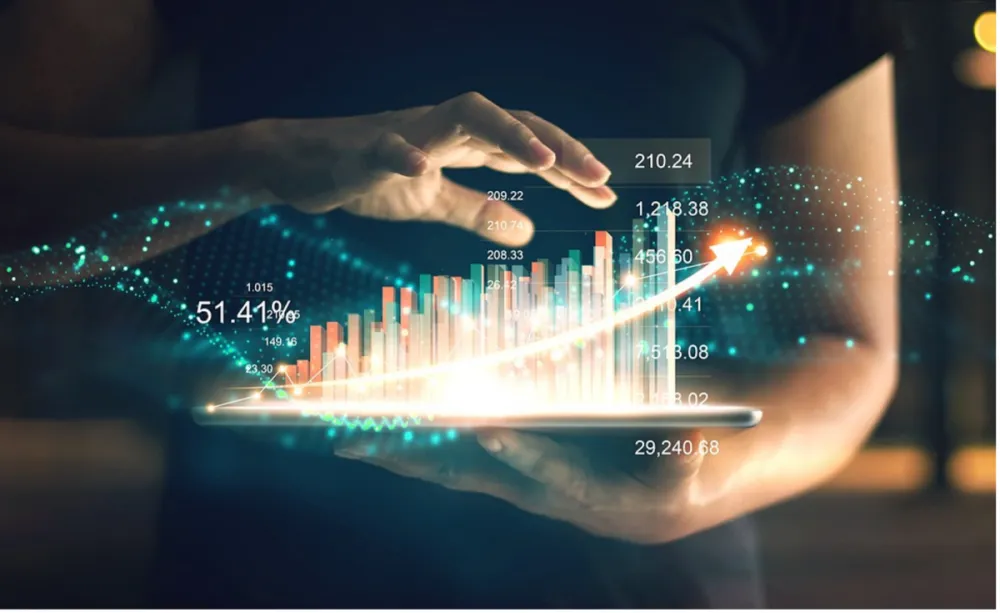Data visualization is a vital part of data analytics. Not only does it make the task of analyzing data a lot more convenient, but it also helps to uncover major trends and patterns that would otherwise have been lost.
As AI Shalloway, founder and CEO of Net Objectives, said:
“Visualizations act as a campfire around which we gather to tell stories.”
Effective data visualization is directly coupled with the tools you’re using since nobody has time to code the visualizations themselves when it comes to commercial usage, with a ton of data involved.
But the real question is, how do you select the right tool for data visualization? There are hundreds of tools available to use, such as Tableau, Grafana, FusionCharts, and so on. With each of them having comparable features and newer tools coming out every month, the choice gets even harder.
So, how do we select the right data visualization tool for our use case? That is exactly what we’re going to answer in this article. Hold tight, and let’s start!
Why Use a Data Visualization Tool?
While it’s not necessary to use a data visualization tool, and you can also do the task manually if you have the right skills, there are multiple reasons one could opt for it, saving time for one.
- Data visualization tools are time-efficient.
Data visualization tools save us from manual analysis of data, which could take a lot of time, especially when it’s enterprise-scale we’re referring to. It increases productivity manifold and is probably the biggest reason companies go for visualization tools for their analysis.
- Reveal Anomalies and Flaws
Another major reason is that visualizations are great at helping us find minor anomalies, flaws, and frauds from a given set of data. Now, these might sound like simple words, but for big companies, they’re no less than a matter of millions.
- Not a Programmer? No Problem!
While having basic knowledge about coding would help, it is unnecessary to use a data visualization tool. Manual visualization techniques require a sound knowledge of coding, but the tools provide you pretty intuitive dashboards, which anybody could get used to in a very short period.
The list goes on; long story short, there’s no need to prove that data visualization is an essential part of the kit every company should have in the 21st century.
Which Key Factor Should be Considered When Selecting the right Tool for Data Visualizations?
While there’s certainly a long list of the factors one should consider before choosing a tool for creating data visualizations, considering the dashboard design and data connectivity top the list, respectively.
Considering the data visualization tool’s dashboard design is the critical factor when selecting a data visualization tool since it’s the very place where the visualizations are observed. Another key factor is considering data connectivity; how the data aimed to create visualizations will be connected to the tool.
Some might argue data connectivity being the most important since if that’s not considered, the backbone of the whole process is endangered. Imagine drawing a painting without colors! That’s how important data is.
Highly Recommended Articles:
Top 15 Types of Data Visualization Explained
Top 11 Easy Data Visualization Tools to Use
Top 5 Factors to Consider When Choosing a Data Visualization Tool
In this section, we’ll be taking a look at the top 5 factors one should consider while choosing a tool to create data visualizations, along with relevant explanations. The factors are all displayed in decreasing order of their importance, starting with the most crucial ones first.
Dashboard Design
Finding the right balance between the simplicity and complexity of a dashboard is of foremost importance when it comes to intuitive dashboards. While the simpler designs may not be able to pack in a lot of information, the more complex ones could clitter up the screen and make you miss what’s sitting right in front of you.
If you’re a beginner and don’t know much about designs, at least consider the dashboard being balanced color-wise. It should be naturally appealing to the eye, with bursts of color amidst suitable whitespaces. Too much white could be over-simplified, while too much color would be a burden for your sight.
You should Check out: 7 Tips to make Data Visualization Easy
So, you get the idea. Since dashboards are all about displaying useful analytics to the user, they should be placed adequately on simple vs. complex lines. Never go for something complex, even if it could deliver a lot of information in a compact space. Because at the end of the day, you will find yourself avoiding it as much as you can.
Use Case
Considering your use-case is the second most important key factor in choosing the right tool for data visualization. Different use cases require different kinds of dashboards. For example, if you require a data visualization tool for a simple use-case, such as showing the real-time analytics of a store, it’ll be much different from what you’d need if your use-case was, for example, viewing stock market shares.
This is a great way to personalize the visualization tools, and a lot of paid tools offer this feature for a relatively smooth experience. Not only do your needs get tailored, but you also get a more optimized experience.
Data Connectivity
Nothing is more destructive for a data visualization tool than an inadequate integration or complete absence of data. Data’s connectivity and presence are the primary input for a data visualization tool that needs to be helpful. So, making sure the right data sources are connected for the tool is of the essence.
Data is often being pulled from multiple sources that are mostly dynamic, meaning that they don’t stay the same. So, if the user does not have the required skills to acquire new and useful data, nor does the tool, therefore you will have serious trouble!
The ability to connect to other sources and the tool allowing to integrate them efficiently is a significant step in enabling effective data visualization. Always make sure you thoroughly check the visualization tool’s capabilities in this regard.
The Audience
Data visualizations are mostly used to convey information to unskilled people who don’t want to dive into the process’s details. These people mainly include managers and stakeholders. The only thing they care about is the results; making the information appear as abstract as possible is the key.
However, sometimes the visualizations may be aimed at the technical team for their training purposes. This is how the audience can vary, and the ability of the tool to adjust according to it plays a key role. So, always make sure the tool is specific for the target audience you’re going to use it for. If the audience is satisfied, your purpose is fulfilled.
Related Article: Data Visualization vs. Business Intelligence
Functionality Vs Needs
Keeping the functionalities that come with the visualization tools and your organization’s needs on the same level is crucial. Most of the time, people consider going for the tool that comes packed with the greatest number of features or functionalities, when in reality, they only require a fraction of those functionalities.
Not only does this clutters up the overall look and adds a whole lot of bloat, but it also cripples your ability to use it for the purpose you need. In the end, you’re left with a lot of functionalities, which do you no good other than wasting your time.
So, considering the needs of your organization is essential, though most people miss it. If you think getting more functionalities will eventually be helpful since you might end up using them later, rest assured; you can add more functionalities to tools later as well.
Before wrapping up, I’d like to recommend some articles for you to check out next. Open them in a new tab and dig in!
-
The Role of Data Analytics at The Senior Management Level

From small and medium-sized businesses to Fortune 500 conglomerates, the success of a modern business is now increasingly tied to how the company implements its data infrastructure and data-based decision-making. According
-
The Decision-Making Model Explained (In Plain Terms)

Any form of the systematic decision-making process is better enhanced with data. But making sense of big data or even small data analysis when venturing into a decision-making process might
-
13 Reasons Why Data Is Important in Decision Making

Data is important in decision making process, and that is the new golden rule in the business world. Businesses are always trying to find the balance of cutting costs while
Wrapping Up
Data visualization is inevitable in today’s data-driven world and the markets are flooded with top-notch data visualization tools. A newbie who decides to use one is left clueless in this sea of available tools. Certain factors are needed to be kept in mind if one wants to select the best visualization tool for himself, according to the situation.
In this article, we have gone through the key factor that should be considered if one is selecting a tool for data visualization. Moreover, there’s a list of other important factors that shouldn’t be ignored. Make sure you go through all of them since they’re almost equally important. Also, don’t forget to leave a thumbs up if you liked the article!

